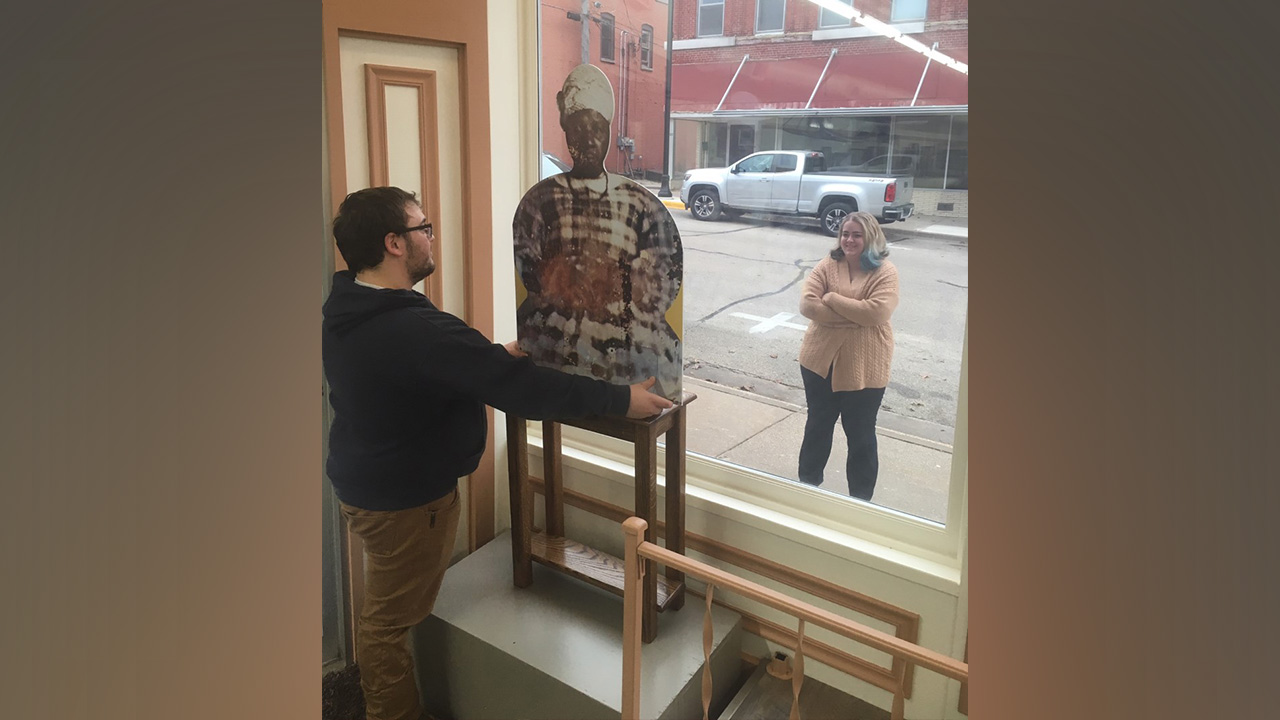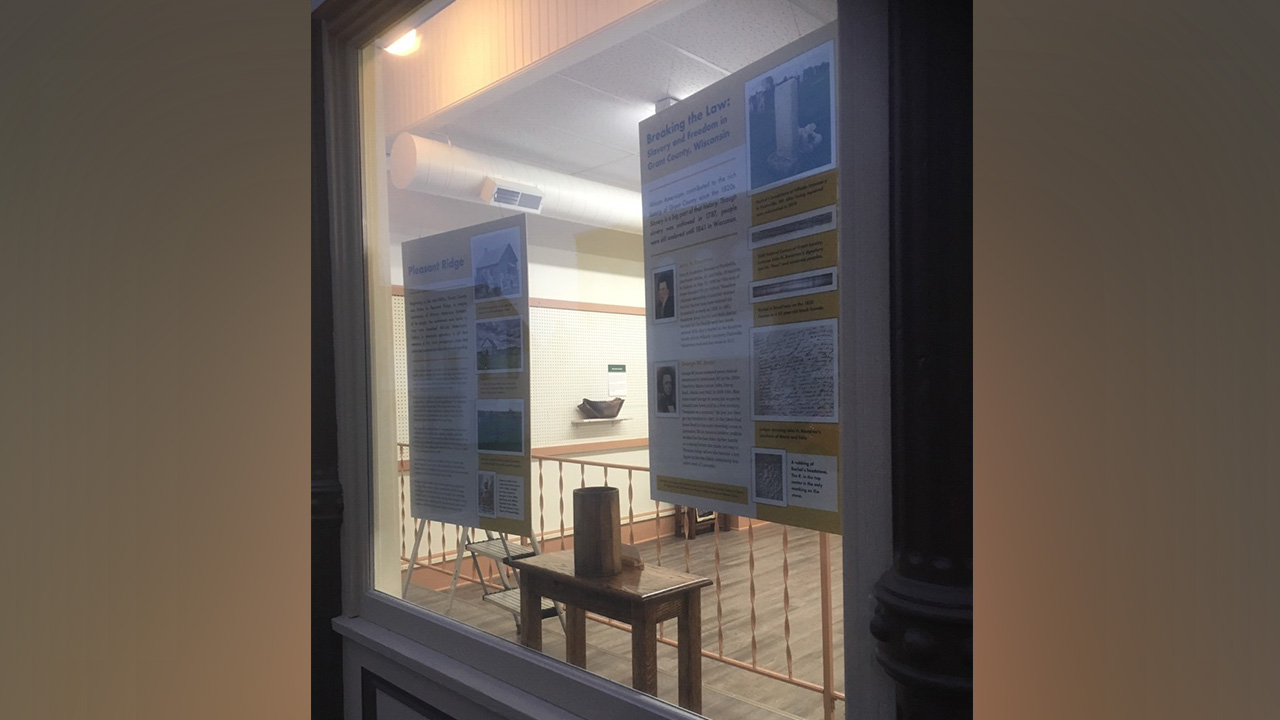




On Thursday, Nov. 21, the Grant County History Museum will unveil a window exhibit on African American history that six University of Wisconsin-Platteville students and a faculty member helped research and build. The opening will be held at the museum’s new space, located at 135 E. Maple Street in Lancaster, Wisconsin.
The exhibit is the culmination of research the undergraduate students have been conducting since last June as part of the Wisconsin History course, taught by Dr. Gene Tesdahl, assistant professor of history at UW-Platteville.
The exhibit will include their research on:
- Illegal slavery in Platteville and Grant County
- The importance of Rachel, Maria and Felix, three African Americans whom John Rountree, founder of Platteville, illegally enslaved in Platteville in the 1830s, and the significance of the Shepard, Green and Jenkins families at the African American community Pleasant Ridge
- The complexity of chattel slavery in a free territory
Student researchers include Kaitlynn Niehaus, a senior English education major from Platteville; Brandon Snyder, a sophomore history major with an emphasis in secondary education from Hazel Green, Wisconsin; Joe Addante, a junior information technology management major with an emphasis in metals processing from Kenosha, Wisconsin; Kelly Krowne, a senior forensic investigation major with an emphasis in crime scene from Wayland, Massachusetts; Dylan Abernathy, a senior social studies comprehensive major with an emphasis in history education from Osceola, Wisconsin; and Keegan Miles, a senior criminal justice major from Belgium, Wisconsin.
“Collaborating with Dr. Rachel Lewis, director of the Grant County History Museum, offered a chance for my students and me to invest in our community,” said Tesdahl. “Everyone should understand the struggles and successes of Black families in early Grant County.
“Doing this research as an undergrad is something I never saw myself doing and I never saw myself as someone who would present at a conference, either,” said Niehaus. “The research itself, specifically researching about Rachel, Maria and Felix, has impacted me in ways I can’t explain. Until Dr. Tesdahl’s summer course, I had no idea the founder of Platteville owned slaves. No one taught that when I was growing up. It challenged everything I knew about the history of my hometown.”
Niehaus said that after learning about the history of her hometown, she wanted to follow the project until its installation. “My only hope for the exhibit is that people keep an open mind about what they are looking at,” she said. “We all think we know certain things to be the truth, and when those things get challenged, it can be difficult.”
“The research the students have done is a great asset to the Grant County Historical Society as it deals with a history not often told and one GCHS does not have the resources to tackle on our own,” said Lewis. “I hope that the exhibit will remind visitors of the complexity of our history and that there is always more to be told.”
The boards were designed by Renee Heimdal, a Lancaster native who earned a Bachelor of Fine Arts with an emphasis in graphic design from UW-Platteville in December 2012.
“It was a real privilege to be involved in putting together this exhibit and displaying this information to the community,” said Heimdal. “This project was special to me, as I grew up less than one mile away from Pleasant Ridge. Visiting the cemetery for photos and getting the opportunity to compile the information for the board from the historical markers and the Wisconsin Historical Society really helped me connect and learn more about an area I thought I was already familiar with. I enjoyed helping spotlight the students’ research, as their work will create a real interest and understanding in an area of Grant County history of which many may not be aware.”
Niehaus, Snyder, Tesdahl and Lewis recently presented “Community Partnerships to Interpret Difficult Subjects,” at the 13th annual Local History and Historic Preservation Conference in Lake Geneva, Wisconsin, which drew from the students’ work in Tesdahl’s Wisconsin History course this past summer, explaining the painful stories of chattel slavery in Wisconsin and how communities can move forward together.
Along with celebrating the lives of Rachel, Maria and Felix, Niehaus and Snyder explained how they recently helped repair and restore Rachel’s 1854 headstone at Hillside Cemetery in Platteville. Lewis addressed how other museum professionals across Wisconsin can build partnerships to face difficult topics honestly in their own communities.